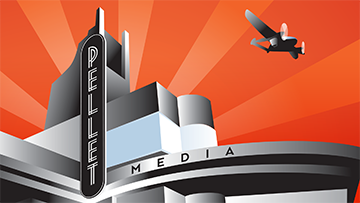Part 7: Foundational Elements
Twenty-two days after receiving funding from the National Science Foundation, we held a pre-kick-off meeting with internal staff to ensure we were all in agreement with what our autism project was designed to do and how we were going to execute it.
Why did we need a pre-kick-off meeting?
During the proposal development process, we learned that this project was different from our other projects. All our previous projects had similar stakeholders, e.g. educators, students and administrators. But, for this project, there were other voices we needed to consider. For example, most parents of autistic students are deeply involved in their child’s decision-making process. We also needed to consider the data and opinions from advocates and people within the medical community. Beyond these stakeholders, there were other external factors that impacted the lives of autistic students. For example, support services varied not only from state-to-state but from town-to-town. However, the one element we didn’t anticipate was emotion. At times, this proved to be very problematic. For example, during our proposal research, we encountered advocates whose passion turned to anger when they heard an opposing view. Even though their anger may be warranted, this was the first time we encountered such strong emotions on one of our projects. All these voices and external factors have an impact on student learning. Even within Pellet, each of us came to this project with our own perspective on the issues. We needed to be unified before we brought the external team together for the full kick-off meeting.
Before I explain how we pulled ourselves together, let me explain why we value kick-off meetings for our projects.
Why have a kick-off meeting?
A kick-off meeting brings all project stakeholders together for a day-long event during which we review the project’s goals and objectives and we establish a timeline with milestones for execution. The kick-off meeting also provides valuable facetime for all the players who will eventually collaborate in a virtual space. What’s most valuable about this meeting is that the entire team starts to get steeped in the content. During my days at WGBH, they would call the kick-off meeting Content School. I was never crazy about that term, but it was an invaluable experience and we replicate that process at Pellet. Prior to the kick-off meeting, the team reviews the proposal and the research used to develop it. At the beginning of the meeting, we invite Subject Matter Experts (SME) to discuss findings and issues, as well as to answer our questions. From there, we move to the project’s goals and objectives, ensuring they are in alignment with what our audience needs.
I’m going a little off topic here, but what follows is important. As you can imagine, being in a room of SMEs there are lots of times the conversations veer off-track, so having a skilled facilitator is essential. I was never good at that role, and at Pellet we usually bring in someone with brains and muscles to keep us on task. My go-to person is Julie Benyo, former director of WGBH’s Educational Outreach department. Julie is a skilled facilitator and her technique is worth sharing. During meetings, she begins by asking everyone to participate, states that there will be no judgment of ideas, and apologizes in advance if she needs to cut-off anyone to keep to time. She ensures everyone has a voice by encouraging participation and then takes the many voices and opinions and whittles them down to a summary statement. In other words, Julie solicits and processes lots of information and packages it in smaller, easy-to-understand chunks. And through this process, Julie ensures that everyone walks out of the room with a sense of ownership. It sounds simple, but it’s not easy.
You can see from that very brief overview why kick-off meetings are critical to the success of our projects. The meeting builds a strong foundation for all of us. Here’s how we became unified on STS before meeting with our external team.
Laying the foundation for a kick-off meeting
Thinking it would be best if we were to have some work completed prior to our meeting, I sent an email to the team that would get us started on two foundational elements, an Editorial Mission Statement (EMS) and the Audience Personas. The email read:
Prior to our kick-off meeting, I would like to prepare for developing our site’s editorial mission statement and audience personas.
Who is Our Audience?
The first step is ID’ing our audience. Recently, I suggested that our primary audiences are autistic Middle School and High School Students, their Families and Educators. Our External Evaluator suggested adding Employers who recruit and hire autistic technicians. Our list now looks like this:
- Autistic MS and HS Students
- Families of autistic students
- Educators who work with autistic students
- Employers who recruit and hire autistic technicians
ACTION ITEM 1 – Identifying the audience. Are there any others we should add to the above list? If so, please email your suggestions prior to next week’s meeting. We can always add to or modify this list during R&D.
NOTE: That’s a pretty wide audience, but the purpose was brainstorming the audience. We would then refine it to a niche.
Audience Personas
The audience persona reflects our target audience and informs our activities and what we publish on the site. These internal documents are researched-based sketches of fictitious characters that represent the attitudes and behaviors of our target demo. In addition to keeping us focused and providing us with a deeper understanding of our audiences, the personas will be the filters through which we run all our ideas to ensure we are producing content that solves problems or provides value to our target audience.
ACTION ITEM 2 – Draft the audience personas. During our kick-off meeting, we will discuss this and develop a plan to complete the personas. The plan will include researching, drafting and revising each persona. This activity will need to be completed within one week after the meeting.
Editorial Mission Statement
The Editorial Mission Statement (EMS) is a brief statement that introduces our project, its target audience, the content we produce, how it is delivered and its outcome.
An EMS includes these five components in one clear and concise statement.
There will be multiple people producing content for the site, and the EMS, along with the audience personas, will help keep us focused. Part of our digital strategy is knowing what to publish and what not to publish. The EMS is another tool we will use to ensure we are publishing meaningful content that provides value to our audience.
My intention was to start the pre-kick-off with these elements drafted. Sometimes it is more efficient to have a written document that everyone can review and react to rather than debating the abstract. Audience personas and editorial mission statements were new concepts to a few team members, so I wanted to make sure my email gave them enough information to understand what we needed to start the conversation. This email also introduced these concepts prior to the meeting, which is critical to creating inclusion by minimizing jargon.
Creating drafts of these elements was a challenge for a few reasons.
Varied Backgrounds: Within our team, we had people from two different backgrounds, media creation and education. Those on our team that came from academia wanted to draft and polish these documents prior to our meeting. Typically, content creators are skilled at being flexible and easily adapting to change because producing content is collaborative and its process is very fluid. I am not making a generalization that individuals from academia are rigid. However, I needed to assure our team members from academia that these were draft elements and that they would have many changes along the way. Of course, this required more work, but having a team of people that includes people from outside of our industry is how we gain new perspectives and discover new opportunities.
Audience: I also noticed through email messages and texts that our mandate of identifying a niche audience was basically being ignored and without intervention our audience was going to be anyone with a pulse. This lack of identifying a small group of individuals with a common problem wasn’t because of defiance. It was an overzealous team who saw the potential of the project. However, sensing some push-back, I ultimately decided to wait until the meeting before emphasizing that we needed to identify a niche audience and produce content specifically for them.
Communication: Another issue that needed immediate attention was our method of communication. At the time, our core team wasn’t large, but when you have a group of people working remotely via email, Word docs and texts, it can quickly spiral into a chaotic mess. For example, people were inadvertently excluded from parts of the conversations, especially when group text was involved, which led to confusion. We recently completed work on a 2-hour PBS show with many moving parts and a huge team. Slack, a cloud-based communication tool that allows teams to collaborate, saved us on that project so we adopted it for this one. However, what worked well on one project didn’t do the trick for us here. Slack proved to be confusing for some people and added another layer of technology that they clearly didn’t want. I polled each member of the team to learn how we could keep the communication flowing and manage document version control. The agreed-upon solution was email for communication and a shared cloud-based service for documents, such as Google Docs or Office 365. For this project, we decided that Office 365 would be best given everyone’s background and the full-featured functionality of the MS applications.
Finally, we decided upon accomplishing five tasks during the pre-kick-off meeting:
- The team will have identified the project’s niche audience
- The team will create an editorial mission statement for the project
- The team will have developed the audience personas
- The team will agree on a draft timeline for a three-year project – including milestones
- Each team member will understand his/her role during the first year of the work
These were realistic tasks that would give us a strong foundation as we moved forward.
Now that I have provided context for this journey within the previous posts, I’ll put the narrative in the backseat so I can detail the mechanics. We’ll start with identifying a niche audience and their problem. Then, we’ll move into developing an audience persona. Finally, I’ll cover the critical editorial mission statement.



